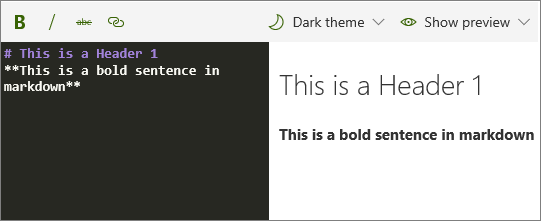

The solution may look something like this, but with a shorter surrounding box to avoid distraction:įor (i in 1:nrow(all. Note that if includeFALSE, all of the code, results, and figures will be suppressed. see link to Greasemonkey solution here) rather than hidden as in my second rpubs example.
HIDE CODE RMARKDOWN INSTALL
r includeFALSE install makes the software run.To do this, check Package(ggplot2).If the message should only be.
HIDE CODE RMARKDOWN HOW TO
In an ideal world, however, the code would be expandable so the user could see exactly what's going on if they want to for educational purposes and clarity (e.g. How To Hide Errors In R Markdown For temporary suppression of package loading warnings, opt out of the options warn ( warn 0) under defaultW / getOption(warn).It is possible to exclude anything from a chunk if you choose include FALSE.e.g. This is fine, and outputs the desired results (improved fit of second iteration - see this solution implemented here). To make the rerun chunks invisible, as described in another stackoverflow question. There's no need to display these chunks again, so I considered using 12.5.2 R code chunks Show nothing (run code), includeFALSE Show nothing (dont run code), includeFALSE, evalFALSE Hide warnings, warningsFALSE. Specify hide to hide all R code chunks by default (users can show. I will try to include some source code so you can see. Specify none to display all code chunks (assuming they were knit with echo TRUE ). I am no expert here, but I believe the buttons are coded in CSS and maybe javascript. These buttons do not work when the html page is opened using dropbox viewer. 5.1.2 Using a Pandoc Lua filter () 5.2 Indent text. 5.1.1 Using an R function to write raw HTML or LaTeX code.

Just not displayed in the output.You can also selectively show or hide these elements by indexing them.I'm writing an RMarkdown document in which I'd like to re-run some chunks (5 to 9). The R markdown notebooks contain an option to use code 'buttons' that show/hide code. 4.19 Put together all code in the appendix () 4.20 Manipulate Markdown via Pandoc Lua filters () 5 Formatting. You can quickly insert chunks like these into your file with.

Note that the plot will be generated in the above chunk. The R Markdown file below contains three code chunks. # this will generate a warning but it will be suppressed Which produces the code folding button: Share. title: 'test' output: htmldocument: codefolding: hide. I'm including the code here for posterity purposes. Print("You will not see the text output.") docendo discimus provided a link that answers the OP question. Hide text output (you can also use `results = FALSE`): You can hide them individually using the corresponding chunk options. When youre making a report for a general audience you generally only want to show the output (e.g. But in the knitr file, I use the output in a further chunk, so I do not want to see it in this one (and theres no notion of progress, since the code has already been run). knit the document regularly to check for errors. When I run the code, i need the print to see the progress (it is quite a long function in reality). You can retrieve all following codes in my github blog tips repository.If you want to see all modifications that I added to my hugo-statnmap-template for code. By default, knitr displays all possible output from a code chunk, including the source code, text output, messages, warnings, and plots. Develop code in chunks and execute the chunks until they work, then move on. As I recently migrated to hugo, I decided I could include this trick with blogdown.As you can see on the present article, code folding is enabled.


 0 kommentar(er)
0 kommentar(er)
